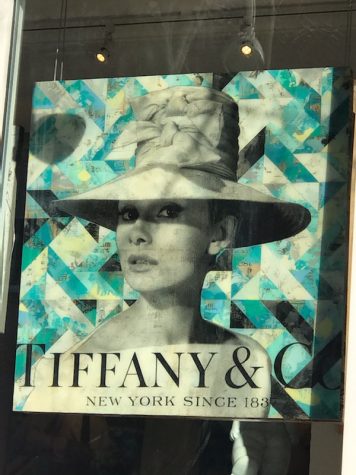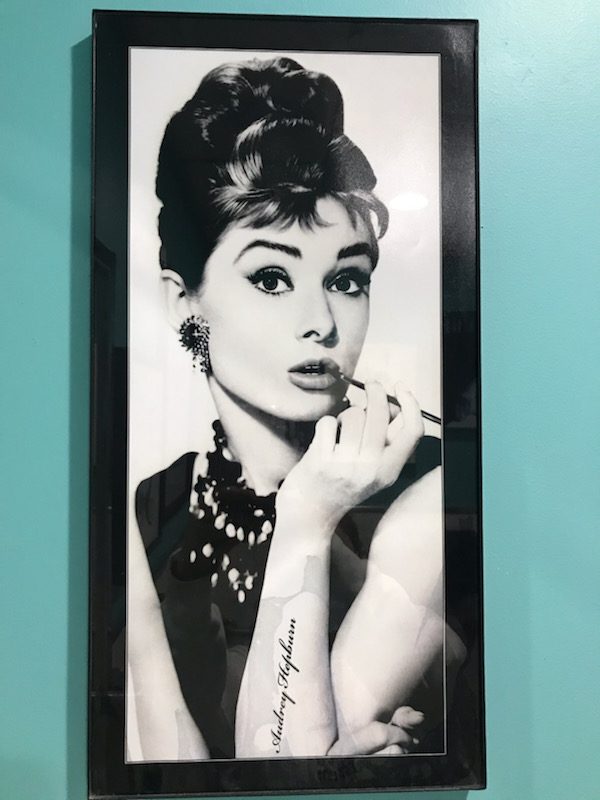‘Audrey’ Documentary: Behind the Facade of Fame
The new Audrey Hepburn documentary aims to draw attention to the personal life of a pop culture icon.
Audrey Hepburn is pictured in her iconic look from the film ‘Breakfast at Tiffanys,’ where she took on the role of Holly Golightly, proving that she could play characters outside of the innocent ingénue.
Maybe you recognize her from her acting career. Maybe you know her as a ballerina. Or perhaps as a humanitarian, style icon, model…the list goes on and on. One thing is for certain: Audrey Hepburn is an icon, with a legacy that has far surpassed her lifetime.
Nearly thirty years after her death in 1993, Hepburn is everywhere. Her portrait is painted in galleries across the city, framed in diner bathroom stalls, and now, she is featured in the new documentary ‘Audrey’ on Netflix, making it one of the dozens of documentaries on the actress available across the internet.
In spite of the fact that Hepurn is such a prominent public figure, I admittedly knew little about her outside of her three major film roles in Breakfast at Tiffanys, Roman Holiday, and My Fair Lady. Thus, I set about watching ‘Audrey’ in hopes of better understanding Audrey Hepburn’s long-lasting legacy. Is her consistent popularity due to her work in film and as a humanitarian, or her classic look and style? Or could there be something more?
The documentary is balanced with old clips and photos of the actress, interviews with Hepburn’s close friends and family, past interviews with Hepburn, and, most interestingly, actor portrayals of Hepburn dancing at different stages in her life. The latter was a creative approach to documentary filmmaking, although a bit dramatic for my taste.

In spite of the organized structure of the documentary, however, I grew confused with the interviews, which contradicted one another. When first describing Hepburn, former art director of Givenchy, Clare Waight Keller, described Hepburn as an “absolute, petite, fragile…little coltish girl,” before then describing her as a powerful fashion icon of the 21st century. Another interviewee then argued that Hepburn was well-loved because she was Hollywood’s “girl next door,” leaving me with more questions than answers. This pattern continued for the rest of the documentary — Keller argued that Hepburn’s style is what made her an icon, whilst critic Molly Haskell found her fashion style to be of the least importance.
While I began to find fault in the documentary, I slowly realized that the true fault was my own. I aimed to find the one thing that made Hepburn the icon that she is today, failing to realize that her legacy was not the point of the documentary.
Inadvertently, I tried to narrow down Hepburn’s long-lasting career into a single simple answer. Without realizing it, I was reducing an entire lifetime into a label — actress, humanitarian, or style icon, as if Hepburn could only be one. No one is one-sided, but it seemed that because Audrey Hepburn was a celebrity, I had ignored this fact.
Hepburn challenges this way of thinking in terms of labels, because Hepburn was so multifaceted.
The contradictions between the interviews were the answer to my question all along. Hepburn’s legacy means something different to everyone, including those closest to her, making it impossible to place her into a box.
Instead of solely focusing on Hepburn’s career, ‘Audrey’ highlights the many trials she faced in her life. She was malnourished during WWII in Holland and abandoned by her father as a teenager, leading to lifelong struggles with insecurity and a lack of love. By spotlighting these less glamorous moments, ‘Audrey’ humanizes Hepburn by showing that a public figure does not have to lead a public life.
This is a critical goal of the documentary, as for younger generations, Hepburn is reduced to just a recognizable face from the past. Kelly Huang ’21 addressed Hepburn’s look playing a major role in her ongoing popularity. “I think Hepburn’s relevancy has been maintained because a lot of people from our generation are interested in other time periods, such as how many people like the “aesthetic” of the 70s and 80s,” said Huang.
Even with its unrealistic dance interludes, ‘Audrey’ offers a window into the person behind the persona, a line that often becomes blurred with fame. Audrey Hepburn is neither all of the above nor somewhere in between. There is no one definition of her, and that is the beauty of her legacy.
To watch the documentary ‘Audrey’ on Netflix (subscription required), click HERE.
Instead of solely focusing on Hepburn’s career, ‘Audrey’ highlights the many trials she faced in her life. She was malnourished during WWII in Holland and abandoned by her father as a teenager, leading to lifelong struggles with insecurity and a lack of love. By spotlighting these less glamorous moments, ‘Audrey’ humanizes Hepburn by showing that a public figure does not have to lead a public life.
Jiada Valenza is Senior Facebook Editor and an Arts and Entertainment Editor for ‘The Science Survey,' helping to manage the newspaper's social media...

